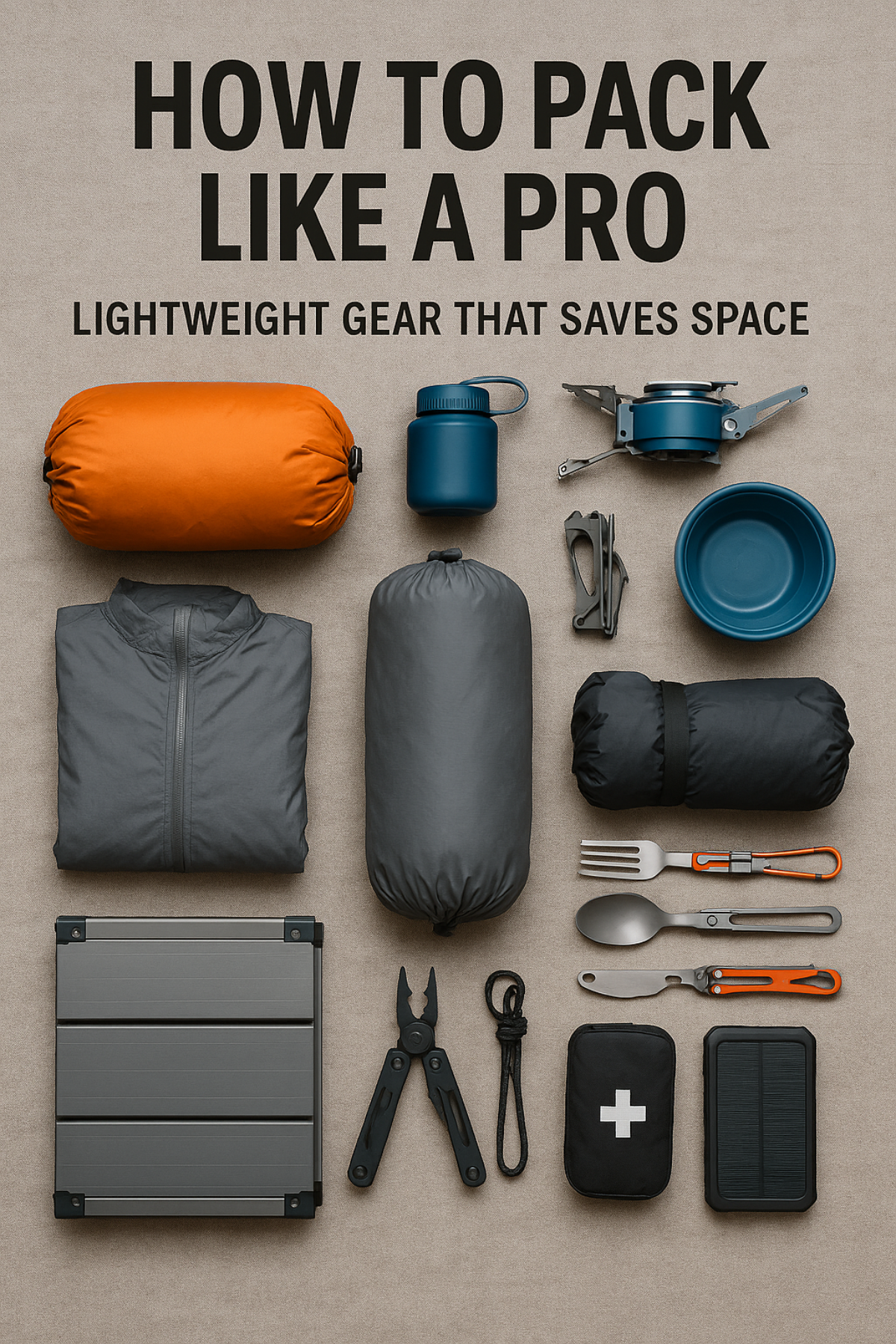Whether you're embarking on a Saturday morning trek or packing for a multi-day camping trip, smart packing can make or break your outdoor adventure. The key? Lightweight gear with maximum function and minimum bulk. In this guide, we'll show you how to pack smart streamlining your essentials into compact, efficient gear that won't bog you down.
1. Start with a Smart Packing Plan
Before we start rolling, let's talk about strategy. An organized backpack is directed by the following general rule: put heavy things against your back and light things towards the top. Roll compression sacks and packing cubes to keep things organized and tight. Always ask: Can this do more than one thing? If so, it stays. Pro Tip
Make a checklist depending on your activity, weather condition, and length of stay. It avoids overpacking and last-minute rummaging.
2. Tent Like a Feather: Opt for Ultralight Shelter
A conventional tent might devour pack room and weigh heavily. Lightweight tents of today (such as our 2-Person Lightweight Waterproof Camping Tent) are made to be compact without compromising comfort. Seek:
-
Weight of less than 5 lbs
-
Simple-setup pole systems
-
Integrated vestibules for additional storage
- Compression carry bags
Alternative: Consider a hammock tent with a bug net for warm weather camping—super light and easy to set up.
3. Sleeping Equipment That Won't Hold You Back
Instead of a large, cumbersome sleeping bag, use a mummy-style bag that rolls up tight and retains warmth. Pair it with a collapsible sleeping pad or even a light inflatable pad that deflates into your hand.
If space is limited, use camping quilts—they're multifunctional and can also serve as blankets.
4. Keep the Kitchen Kit to a Minimum
- Trail cooking doesn't need a kitchen. Choose the mini, multi-use items:
-
Collapsible camp stove with a fuel-saving burner
-
Titanium cookware (lightweight, hard-wearing, and nestable)
-
All-in-one spork or sets of utensils
- Collapsible bowls and cups
Pack meals that use only boiling water (like dehydrated meals or oatmeal), and pack spices in small jars or straws wrapped in heat.
5. Strategically Pack Clothes
Layering is the solution. Rather than packing bulky clothing, wear moisture-wicking bottom layers, a lightweight insulated jacket, and a waterproof shell. Roll clothing tightly or pack in compression bags to maximize space.
Essentials:
- 2 quick-dry shirts
-
1 convertible hiking pants (to shorts if available)
-
1 base layer
-
1 insulation layer (down or synthetic jacket)
-
3 pairs of moisture-wicking socks
- Microfiber towel (compact)
6. Gear Up with Space-Savers
These handy additions will keep you agile without congesting your pack:
-
Foldable water bottles or hydration bladders
-
Multi-tool (pliers, knife, screwdriver in one)
-
Solar-powered lanterns or collapsible headlamps
-
Ultra-compact first-aid kit
- Paracord (light but strong—ideal for fixing things or suspending food)
7. Pack It All in the Right Bag
Your backpack must be ergonomically-shaped, durable, and under 3 lbs when empty. Think about:
-
Internal frame for load stability
-
Multi-compartment structure
-
Rain cover
-
Ventilation for airflow
Our choice: a 40–55L backpack for less than 5-day adventures. Anything longer can result in overpacking.
8. Bonus: Save Digital Space Too
Download offline maps, trail guides, or even a lightweight stargazing app before your trip. Don’t waste pack space on physical guides when your phone can do it all—just keep it protected and charged with a compact solar power bank.
Final Thoughts
Packing like a pro isn’t about sacrificing comfort—it’s about maximizing efficiency. With the right lightweight gear, you’ll move easier, explore farther, and truly enjoy the wild without the weight.
Ready to take your camping to the next level? Explore our handpicked lightweight camping gear and space-saving necessities at ExplorationWild.com and start smarter.

